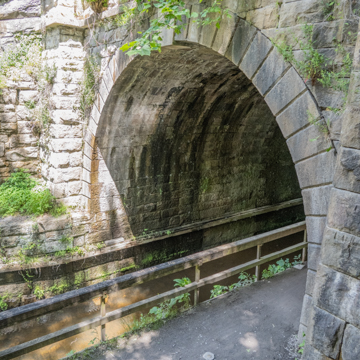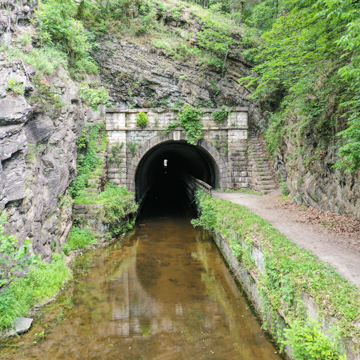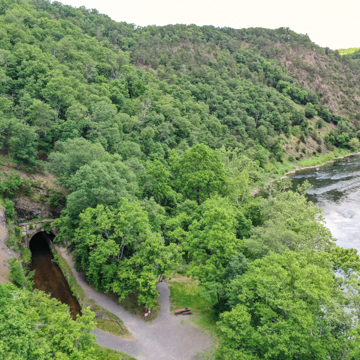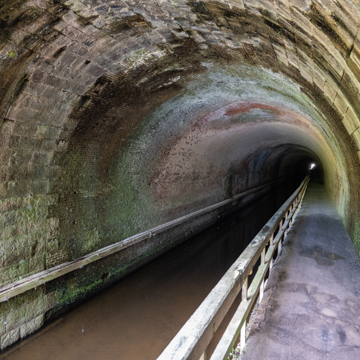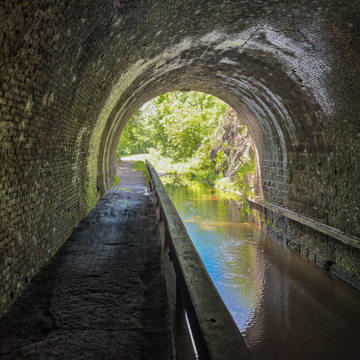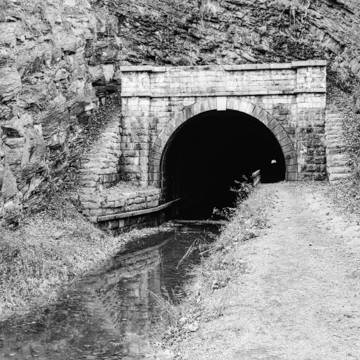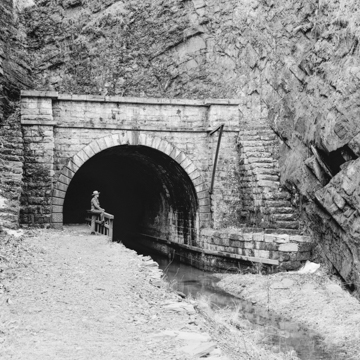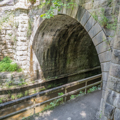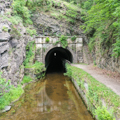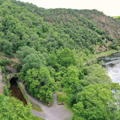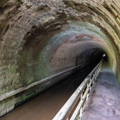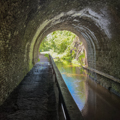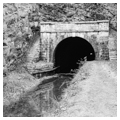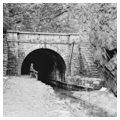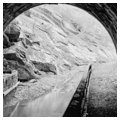One of the major engineering feats of the Chesapeake and Ohio Canal, and of its time, was the construction of the 3,118-foot-long Paw Paw Tunnel to avoid a 6-mile stretch of arduous terrain. The tunnel’s construction, begun in 1836, involved excavating from the north and south portals, as well as drilling four vertical 8-foot-diameter shafts from above for ventilation and removal of spoils. Work ceased in 1841 and did not resume until November 1848, with new contractors. Paw Paw Tunnel has a 24-foot-wide opening with portals framed by limestone entablatures and is composed of a brick-lined barrel arch with a 12-foot radius. A 4-foot-wide brick tow-path runs along one side of the canal bed. This impressive passageway is still used by bicyclists and hikers on the towpath.
References
Historic American Buildings Survey. “Chesapeake & Ohio Canal, Paw-Paw Tunnel.” HABS No. MD-810, Historic American Buildings Survey, 1960. Prints and Photographs Division, Library of Congress, Washington, D.C.


